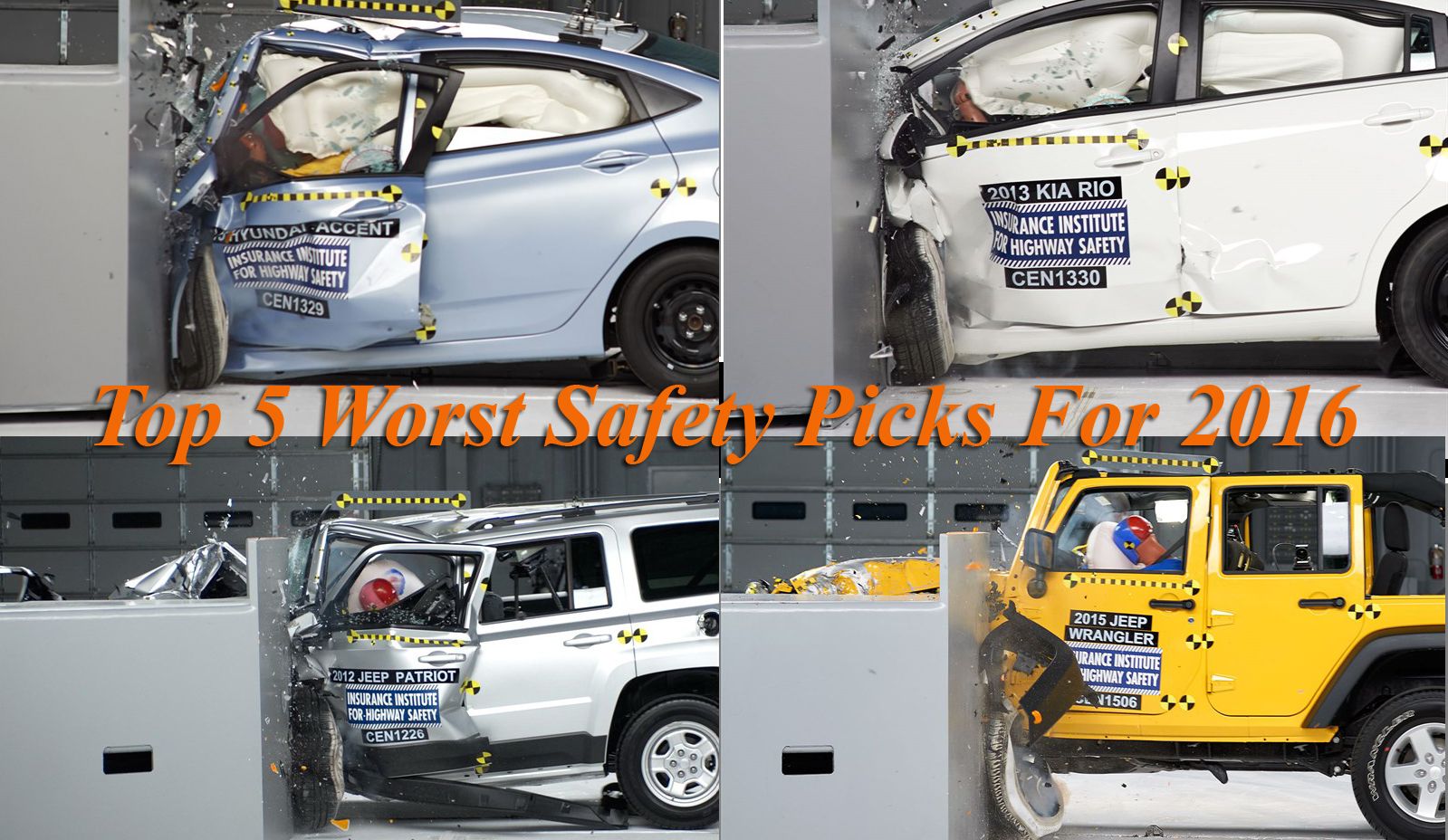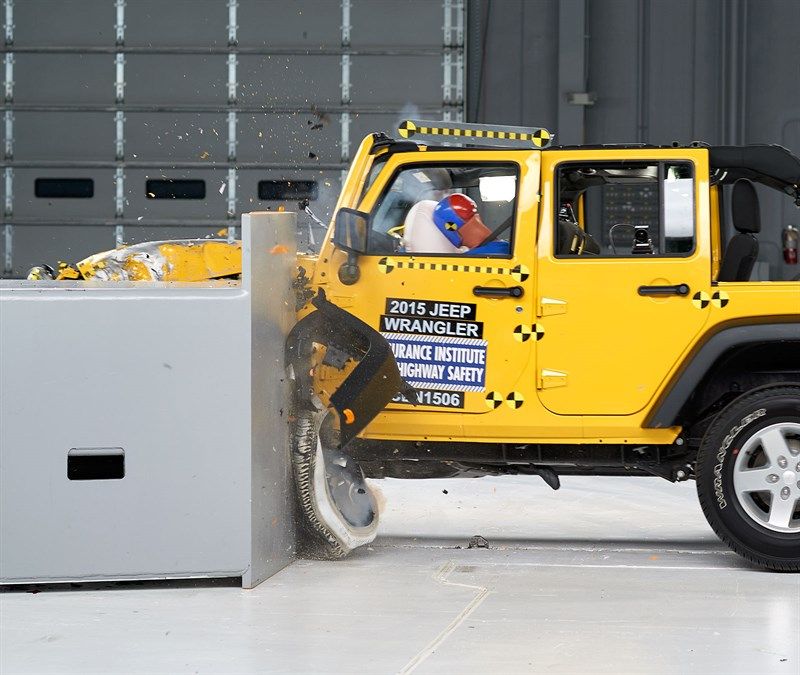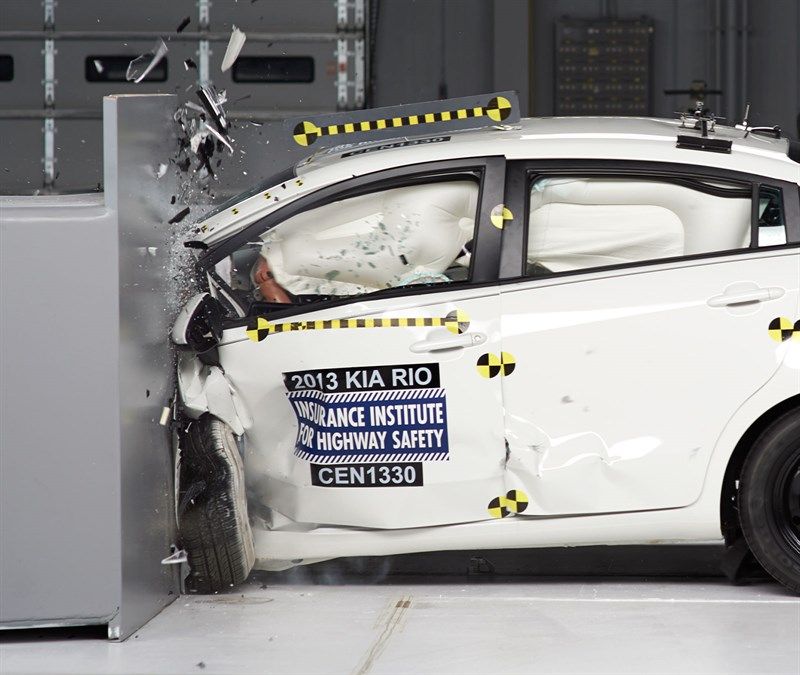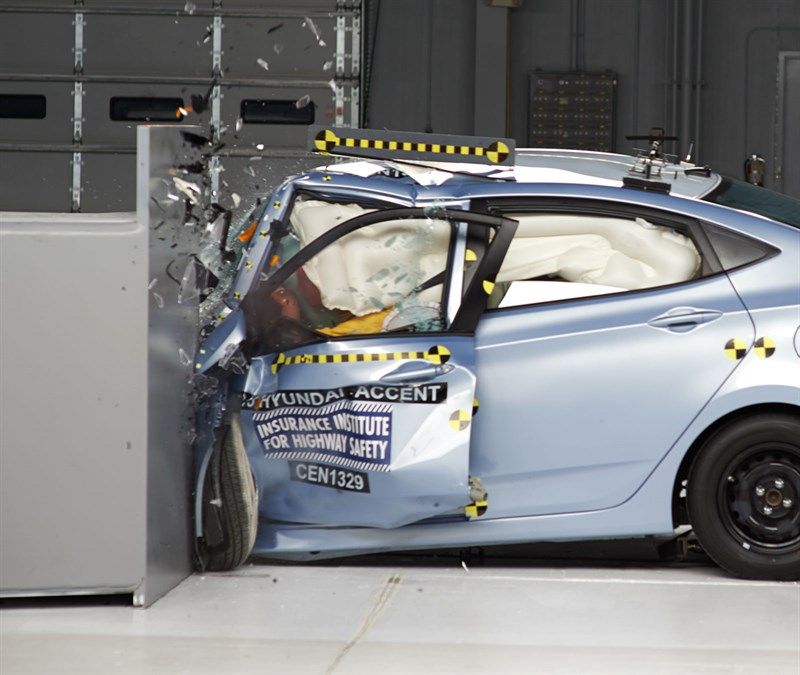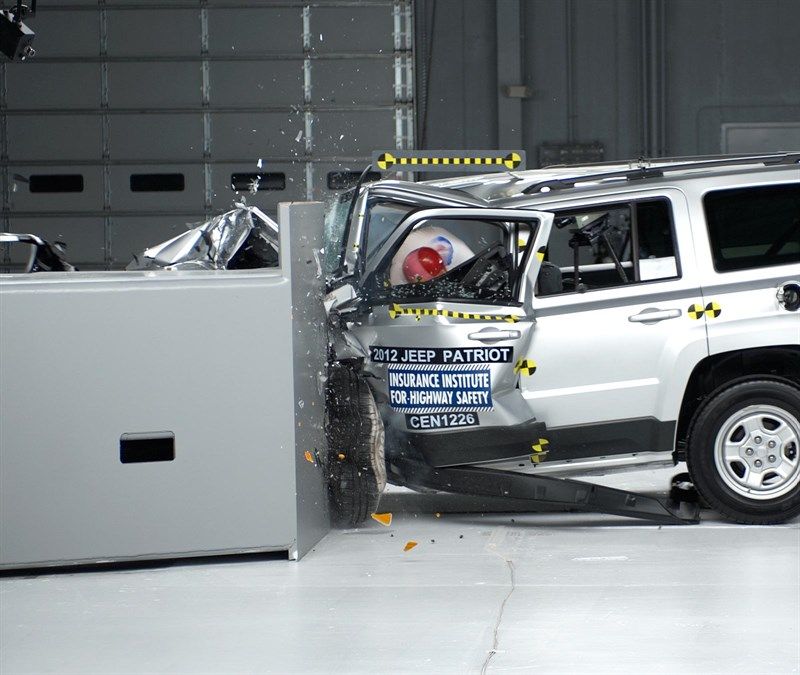The modern automobile is a marvel of convenience and engineering, and thanks to rapid technological advances over the past decade, the average new car is safer than ever before. However, traffic accidents still claim roughly 35,000 lives every year in the U.S., and in response, safety->ke2860 standards are becoming stricter. That means some models just don’t make the grade, whether it’s due to outdated design, cost-cutting measures, or just plain old physics.
Thankfully, consumers can look to organizations like the National Highway Traffic Safety Administration (NHTSA) and Insurance Institute for Highway Safety (IIHS) for guidance, and as safety tech marches forward, the evaluative bodies are looking to keep pace. The NHTSA, for example, recently proposed an update to its safety rating system, including a new type of crash test, crash dummies that are more “human-like,” an assessment of equipped crash-avoidance technologies (like automatic braking), and an assessment of safeguards for pedestrians.
To determine the worst safety picks for 2016, I took into account scores from both the NHTSA and the IIHS. Only mass-produced cars released in the last 12 months under the 2016 model year were considered. I also looked at model history and death rate per number of registered vehicles.
Continue reading for the Top 5 Worst Safety Picks for 2016.
Understanding Safety
A Brief Look At History
Automobile safety has come a long way since the first car hit the road. Early on, safety concerns dealt with things like recessed controls and padding on the dash to reduce passenger impact. Fast forward to 1949, when the Chrysler Crown was released as the first car to come with standard disc brakes. Then in 1958, Nils Bohlin, an engineer at Volvo, invented the three-point lap and shoulder seat belt. In 1965, “Unsafe At Any Speed” by Ralph Nader was published, wherein automakers were criticized for their reluctance to embrace safety features or spend money on improving safety. The ‘70s saw airbags trickle into the list of features, while in 1984, New York was the first U.S. state to pass a mandatory seat belt law.
Modern Standards – NHTSA And IIHS
These days, the best, most easily accessible data on automobile safety comes from the NHTSA and IIHS.
Originally created in 1970, the NHTSA is a federally run agency under the Department of Transportation. It conducts crash tests and provides the public with results via a five-star rating system, with one star being the worst, and five stars being the best. Vehicles are given ratings in several individual crash test categories, as well as a single rating overall. Tests include frontal barrier impacts, side barrier impacts, and side pole impacts, as well as equipped safety technologies like lane departure warning and forward collision alert. You can find more information on the NHTSA crash test procedures here.
The IIHS is an independent non-profit organization originally founded in 1959. Like the NHTSA, the IIHS conducts crash test research and provides the results to the public, but does so through a four-tier rating system for each crash test category. The ratings include “Good,” “Average,” “Moderate,” and “Poor.” Tests include small overlap front impacts, moderate overlap front impacts, side impacts, roof strength, and head restraints plus seats. Crash prevention technologies are also considered. You can find more information on the IIHS crash test procedures here.
The main takeaway is this – these organizations put new vehicles through a battery of tests to determine the likelihood of sustaining an injury in each type of impact. And while there’s a base safety standard that all cars must meet in order to be on the road, some are significantly less safe than others. This becomes most apparent as standards are updated and older designs fail to reach the new average.
So what makes a car unsafe? As you can imagine, a variety of factors are involved, but broadly speaking, there are a few basic things to look out for if safety is your top priority. First and foremost is size and weight – in general, a larger, heavier car will perform better in a crash than a smaller, lighter car. Grip from an AWD drivetrain also provides an additional layer of safety, while electronic systems such as automatic braking and blind spot monitoring, both of which are becoming more commonplace with each production cycle, can help prevent a collision from occurring in the first place.
So, without further ado, the Top 5 Worst Safety Picks for 2016.
Jeep Wrangler
With rugged good looks and incredible capability over unpaved surfaces, there are several things the Wrangler does very well. However, when it comes to safety, this old standby is one of the worst offenders. Chalk it up to the Wrangler’s outdated design and unwavering focus on off-roading – it shouldn’t comes as a surprise that this compact SUV is out of its element on normal, day-to-day highways and surface streets.
While ground clearance is ample, the Wrangler’s high center of gravity means it gets only three stars in NHTSA rollover tests. For crashworthiness, the IIHS rated the two-door Wrangler as “Marginal” in small overlap front impacts, “Marginal” for head restraints and seats, and “Poor” in side impacts (supplemental side-impact airbags are an available option). However, it should be said that moderate overlap front impacts were rated as “Good,” and the four-door Wrangler improves on small overlap front impacts and side impacts with a rating of “Good” and “Marginal,” respectively. Still, the Wrangler is most definitely not a family hauler, unless, of course, your family lives at the top of a boulder-strewn mountain.
Read our full review on the Jeep Wrangler here.
Mitsubishi i-MiEV
These days, the zeal for ultimate green efficiency is widespread, leading many automakers to create some pretty radical alternative vehicles. Such is the case with the Mitsubishi i-MiEV, which combines a 2,500-pound curb weight, aerodynamic body panels, an all-electric drivetrain, and a low MSRP, producing an easy entry into the EV lifestyle. Unfortunately, like the Wrangler, the i-MiEV finds functionality at the cost of safety.
The NHTSA gives the i-MiEV sub-optimal ratings across the board, and notes crash worthiness in side impacts as particularly troubling. Frontal impacts are rated at four stars, rollover is rated at four stars, and side impacts are rated at three stars. The culprit? Most likely aggressive weight-savings measures to increase the car’s range – one of the most important specs for an all-electric vehicle. All told, the i-MiEV makes popping down to the co-op a breeze – just make sure you don’t hit anything.
Read our full review on the Mitsubishi i-MiEV here.
Kia Rio
It ain’t easy being the Kia Rio. Not only does it compete against well-established sub-compacts like the Ford Fiesta and Honda Fit, but it does so at a bargain price. Some might find the sub-$15,000 MRSP extremely attractive, but there are other aspects to consider that make it much less appealing.
The biggest issue seems to be side impacts. During testing, the NHTSA observed that the left rear door intruded into the cabin, striking the torso of the rear passenger dummy in a way that would cause a “high lower spine acceleration.” Meanwhile, the IIHS gave the Rio an “Acceptable” side impact rating, but a “Marginal” small overlap front impact rating.
Most alarming, however, was an IIHS study released earlier in 2015 that looked at death rates among high volume vehicles between the 2008 and 2011 model years. Topping the list was the Kia Rio, with 149 deaths per 1 million vehicles registered.
Read our full review on the Kia Rio here.
Hyundai Accent
The Hyundai Accent can also be found on that IIHS list, not once, but twice, with the third-placed four-door Accent at 120 deaths per 1 million cars registered, and the fifth-placed two-door Accent at 86 deaths per 1 million cars registered.
Throughout its four generations, the Accent has never delivered outstanding crash test ratings, and while the latest model is an improvement, it’s still a long way from earning any safety accolades. The NHTSA gives the Accent four stars in every category, but raises issue with side impacts, demonstrating a possible “high lower spine acceleration” caused by intrusion of the left rear door. Meanwhile, the IIHS gives the Accent an “Acceptable” rating for side impacts, but a “Poor” rating for small overlap front impacts (the other three categories are rated as “Good”).
Read our full review on the Hyundai Accent here.
Jeep Patriot
I’m not picking on Jeep, I swear. Past Patriot models have posted solid safety results, including several Top Safety Pick awards from the IIHS, and compared to the Wrangler, the Patriot is as safe as a helmet covered in bubble wrap and inflatable water wings. However, the Patriot is a great example of a vehicle that simply fails to keep up with the times.
The NHTSA gives the Patriot five stars in side impacts, but three stars in both frontal crashes and rollover, with four stars overall. The IIHS gives the Patriot a rating of “Good” in each category, but a “Poor” rating in small overlap front impacts. All told, the Patriot looked a lot safer just a few years ago, but now, it’s lagging.
Read our full review on the Jeep Patriot here.
Conclusion
So there you have it, TopSpeed’s Top 5 Worst Safety Picks for 2016. Do you own one of the vehicles listed above? If so, do you agree with our assessment? Do you disagree? What do you think about vehicle safety, and how can consumers work to make sure only the safest vehicles stay on the road? We wanna know, so post in the comments below.

